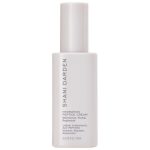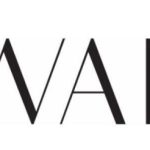Look, anyone with a fashion media job (or seeking a fashion media job) knows what the temperature is in the industry right now. Many titles are closing (some partially, others fully), and layoffs seem to be announced more frequently. Teams are getting slimmer, with responsibilities that once spanned multiple roles now falling on a single person. The once-storied editor-in-chief role isn’t necessarily a holy-grail gig these days — and publications are more than happy to tap younger, cheaper talent for leadership-level roles at discount salaries.
It’s not just the mastheads that are changing: The career path of a fashion editor looks totally different than it did a decade ago.
“The biggest shift is that fashion content was coming from the traditional titles, and now it’s coming from brands themselves,” says Chandra Turner, founder of Talent Fairy, a longtime print magazine editor turned independent career coach and headhunter focused on traditional media roles and pivot opportunities alike. (Many might know her as the founder of Ed2010.) “Brands are covering the fashion industry from within, to consumers directly, because they can… Before, we — media —were the conduit to fashion content. That’s not necessarily the case now.”
Beyond that, there are so many more platforms through which to digest content, she argues, especially on social media: “It’s more scattered. It’s also made trends very hard to predict, because who sets them? We’re all trying to figure out who’s in charge of the narrative.”
Meanwhile, seasoned editors are becoming somewhat of an endangered species.
“Most of the people that you started out with don’t work as writers anymore,” explains Lauren Sherman (a former Fashionista EIC), who left her post as chief correspondent at Business of Fashion a few months ago to start a fashion newsletter at Puck. There’s a collective sense of, “‘I’m done with this, I’m moving on to more interesting things,'” she says. (Of Sherman’s three close industry friends she came up with, “one is an editor at a big magazine, one is out of fashion altogether and one is a novelist.”)
After seven years full-time at BoF, Sherman joined Puck “because I really believed in what they were doing, the business model and its future.” Her decision centered around getting “more control over what I was writing about, being able to sort of explore a different side as a writer and write in a stronger voice — but also, I had no interest in getting an LLC and launching a business myself,” she says. (She’s in a full-time role with benefits at Puck.) “I’ve been a freelance writer before, I would do it again, but I’m not interested in launching my own publication and dealing with my own P&L. My husband did that a few years ago and has been very successful. One entrepreneur in the family is enough.”
According to Mickey Boardman, an industry legend affected by the Paper layoffs (but who always has other projects in the works), newsletters are more and more often where quality fashion analysis and critique happen today, citing Sherman and Amy Odell as prime examples.
“They’re freer to say more critical things than at traditional magazines, because magazines are afraid to alienate brands or talent,” he says. While voicier, unbiased analysis is something expected from The New York Times‘ Vanessa Friedman or Cathy Horyn at The Cut, “we’re not used to seeing real fashion criticism” from other outlets in recent years, where content is “more of, ‘here’s the show’ or ‘here are the clothes,’ presented without comment if they’re bad, with praise if they’re good.”
For editors focused more on market, styling and shopping content (versus news and feature writing and editing), starting a solo act on Patreon or Substack can also be savvy — and lucrative. “If you’re able to manage it well and you work hard, you can do a lot,” Sherman says. “You can have a pretty small audience and, if you have a paid service, you can make pretty good money.”
The late-aughts/early 2010s fantasy of fashion media success millennials were reared on, from “The Devil Wears Prada” to “The Hills” to “How To Lose a Guy in 10 Days” to “The September Issue,” doesn’t bewitch Gen Z in the same way. And maybe that’s a good thing: Even though those Hollywood-ified takes on the industry didn’t reflect reality even at the time they debuted (especially amid the 2008 recession and aftermath), they inspired a generation of aspiring editors and writers. To be fair, it still took considerable chutzpah, privilege and/or delusion to get into this business 10, 15 years ago.
Nowadays, influencers and social media platforms spur career aspirations — not necessarily fashion publications. “A lot of these magazines, young consumers don’t read them, so they’re not like, ‘Oh my God, I want to be a fashion writer when I grow up and write for magazines,'” Sherman argues. “It’s just not as appealing.”
Ambitions seem different and more diversified nowadays, she says: “I don’t get as many emails saying, ‘I want to go into fashion journalism.’ It’s more like, ‘I want to write articles for this publication, but I also want to get paid by an advertising agency to do consulting, and also do this and do that.'”
Where advertisers are putting money differs, too. Budget that used to go to magazine buys, print or otherwise, can now go toward other marketing efforts, as brands realize and cultivate their own voice and where or how to use it.
“Brands that have money are getting into all sorts of creative production — which maybe is great, maybe is not,” Boardman says. “Either way, it’s just different than what it’s been.”
It makes sense: This allows brands to control the narrative (something that, theoretically, they can’t — or shouldn’t — do with journalism). Boardman recalls a conversation with a fashion marketing executive about how “a lot of brands say they have no budget for advertising or for marketing, but then they have a budget to create a short film that’s shown at the Cannes Film Festival directed by one of the most famous directors,” pointing to Saint Laurent pairing up with Pedro Almodóvar to produce their own highbrow, surely high-priced content for the event. Whatever money is still there to spend on brand-defining and -boosting moments just isn’t going to traditional fashion media like it used to.
Still, there will always be a demand for content.
“Despite the imminent demise of media and print magazines, there’s always still going to be content,” Boardman believes. “It won’t necessarily look the way or act the way it has in the past, but they’ll still exist, in some form or other.”
The “interesting” outreach he’s fielded since parting with Paper has included “a few magazines, but mostly other kinds of companies you don’t think of as content creators, more as lifestyle brands that create content and want to create more content, with the budgets and will to do that.”
The opportunities outside familiar media, with brands moonlighting as publishing houses — usually with fatter wallets and financial stability, from whatever their actual core business is — can be surprising, varied and enticing for many reasons. Boardman’s post-Paper prospects range from a hotel brand to an auction house, opportunities that have “100%” piqued his interest.
“With many magazines closing, stopping print editions or publishers bought by other companies, it’s easy to think, ‘It’s not really what it once was’ and wallow in the nostalgia. But it’s reassuring to see other companies creating content,” Boardman says. “There are places for writers, photographers and creators. It’s just not necessarily going to be the same places or formats.”
When brands hire editors to launch or elevate and expand content, though, expectations aren’t always realistic, according to Turner.
“The big challenge I see over and over again with non-media companies trying to create editorial is that they underestimate how many people and how much resourcing they need to create the same level of high-brow content that fashion media has done for so long,” she says. “They often will hire one head of content or a single editorial manager and think that that person can cover all platforms and oversee strategy, audience development, writing, editing and idea generation.” (Anyone who’s worked in editorial will tell you: This doesn’t reflect the realities and resourcing needed for successful content creation.)
While long regarded as a more lucrative alternative, brand roles aren’t always the cushy windfall they’re often cracked up to be — or, at least, what they’re romanticized to be by those clinging to editorial careers.
“Yes, I find that the paychecks are actually better, and part of the problem is that the pay in ‘traditional’ fashion media has just gone down,” Turner says. “It’s really not great to say, ‘Oh, well, they pay so much better at the fashion companies to create editorial-like content,’ because (fashion media) really should have been paying people better all along.” (According to Fashionista’s most recent salary survey, the mean salary for a fashion editor is $74,090, going up to $78,000 for a senior editor and $118,670 for a director-level editor.)
That said, Turner’s clients are “getting paid more when they go to work in-house at a brand creating the editorial content,” she adds. “It’s an uptick, but it’s not double.”
Titles of full-time brand roles are different than those at fashion media titles, so it involves some decoding. “‘Head of content’ is most popular,” Turner says — though, she’s finding that “companies are using the word editorial more than they used to.” There’s also ‘head of content marketing’ and ‘director of marketing, editorial.’ For people in more market- or styling-centric positions, there’s “just as much opportunity” and even “probably a more natural transition” to buyer roles with retailers, if they haven’t already made the switch.
Though most media news is of the doom-and-gloom variety, the industry still exists, as do job opportunities. Commerce-focused roles, especially, have become a bigger priority for media companies, as shoppable content (think: NY Times‘ Wirecutter, New York‘s The Strategist) and affiliate programs (where a publisher gets a cut of a sale if it comes from a direct link) are more widespread. Jobs focused on content for specific social platforms or newsletters are also relatively fruitful, as are branded editorial (i.e. sponsored content) gigs at legacy publishers.
For recent or upcoming grads aspiring to work in fashion media, Turner recommends “getting as much varied experience as you can: Work in traditional fashion editorial and work for brands. Try to work across platforms, as early on as possible, so you’re a bit more flexible.”
Cross-platform chops don’t just mean social media these days, she says: “Make sure that you’re at least exposed to audio (i.e. podcast) work, newsletters and e-commerce or affiliate. As much as you can be exposed to in internships, first jobs and temp positions early on, the more competitive you’re going to be… You may be doing a little bit of everything, whether at a traditional media company or a fashion brand, because the staff aren’t as big as they used to be.”
You should also get to know the realities, without all the admittedly glitzy smoke and mirrors, of a career in fashion media.
“So many people think fashion is so glamorous, that it’s all just clothes, hanging out with celebrities and going to parties,” Boardman says. “Most of it is really just transcribing interviews when you don’t want to transcribe them, schlepping garment bags to shoots, chasing celebrities who are supposed to call you but haven’t. You find that out when you’re an intern or take whatever job you can get — answering the phones, being in the mailroom, whatever it is. Either you say, ‘Wow, this is horrible. I want to get an MBA so I have a finance job and comfortable life,’ or you say, ‘I don’t care, I’m just excited to be here.'”
Historically, internships may have been problematic and exploitative, Boardman concedes, but they allow a different look at the industry — and a chance to connect with and impress a potential future boss. He calls his own Paper internship, long before he helmed the title, a “six-month audition process slash blind date, as opposed to a 15-minute interview where you don’t really get to know the person or they don’t really get to see how fabulous you are.”
A big challenge for these magazines right now is finding talent to stay and develop at them, Sherman says: “I’m sure you have more people who want the jobs early on, but to find people who want to stick around (is harder.) I’m a really big believer that if you’re going to stay in media, you should try to work for companies that you like. If I was going to just work at a random company, I would have been a banker or something. If I’m going to stick in this (field), I might work at places where I believe in what they’re doing.”
This is true whether you’re going for a job at a publication or a brand. “When people hire me to hire their people, they always want to hire somebody who already wears the product and uses their stuff — and also have to be really talented, of course,” notes Turner.
Right now, brands want to hire candidates that “understand audience development and strategy, and know how to work with outside teams to add knowledge,” Turner adds, as well as individuals who have a knack for “knowing what you need and knowing where you lack” — i.e. “(knowing) what your holes are” experience-wise and having the proverbial Rolodex ready to find that SEO savant or paid social maven to help make a fashion brand’s content convert into sales.
Another plus is “showing an expertise in a particular area,” Turner adds, like luxury, sustainability or size-inclusivity, for example. Though, there are benefits to being a generalist, too.
“It’s a blessing and a curse to have multiple interests and venues for expression,” Boardman says. “I have a buffet approach to life: I like to graze, I like a little bit of this, a little bit of that. That’s actually why magazines have always been great for me, because there’s always the next issue and the next story; whatever you’re working on is going to be finished soon.”
Sherman calls this a “transitional phase” for the industry: “That’s why people are creating all this independent stuff, and I think a lot of them will go back to something more traditional or something where they’re not entrepreneurial. But it’s going to be a minute.”
“It reminds me of when I went freelance in 2012 and I thought, ‘Well, I’ll have to do this forever, because there really aren’t any jobs for me,’ and BoF emerged,” she continues. “It also will be interesting to see if some of these independent people come together to create a magazine again — or whatever the new version of that is.”
If you’ve invested one, five, 10, even 20 years in a media career (fashion or otherwise), the current landscape can seem bleak as hell. It’s okay to opt out, pivot, take a break or move on forever without feeling failure or defeat.
“Right now, people are very nervous because there’s not as much advertising coming in and companies are cutting their budgets, so things are slowing down in traditional media,” Turner says. “Then, there’s this looming threat that AI is going to take over jobs… I don’t know what the replacement is for the tech boom, but there always is a new thing that comes in, it will be something. Fashion’s not going away, and people’s desire for it is only going to be greater. I’m not a bit worried.”
Please note: Occasionally, we use affiliate links on our site. In no way does this affect our editorial decision-making.
Want the latest fashion industry news first? Sign up for our daily newsletter.



